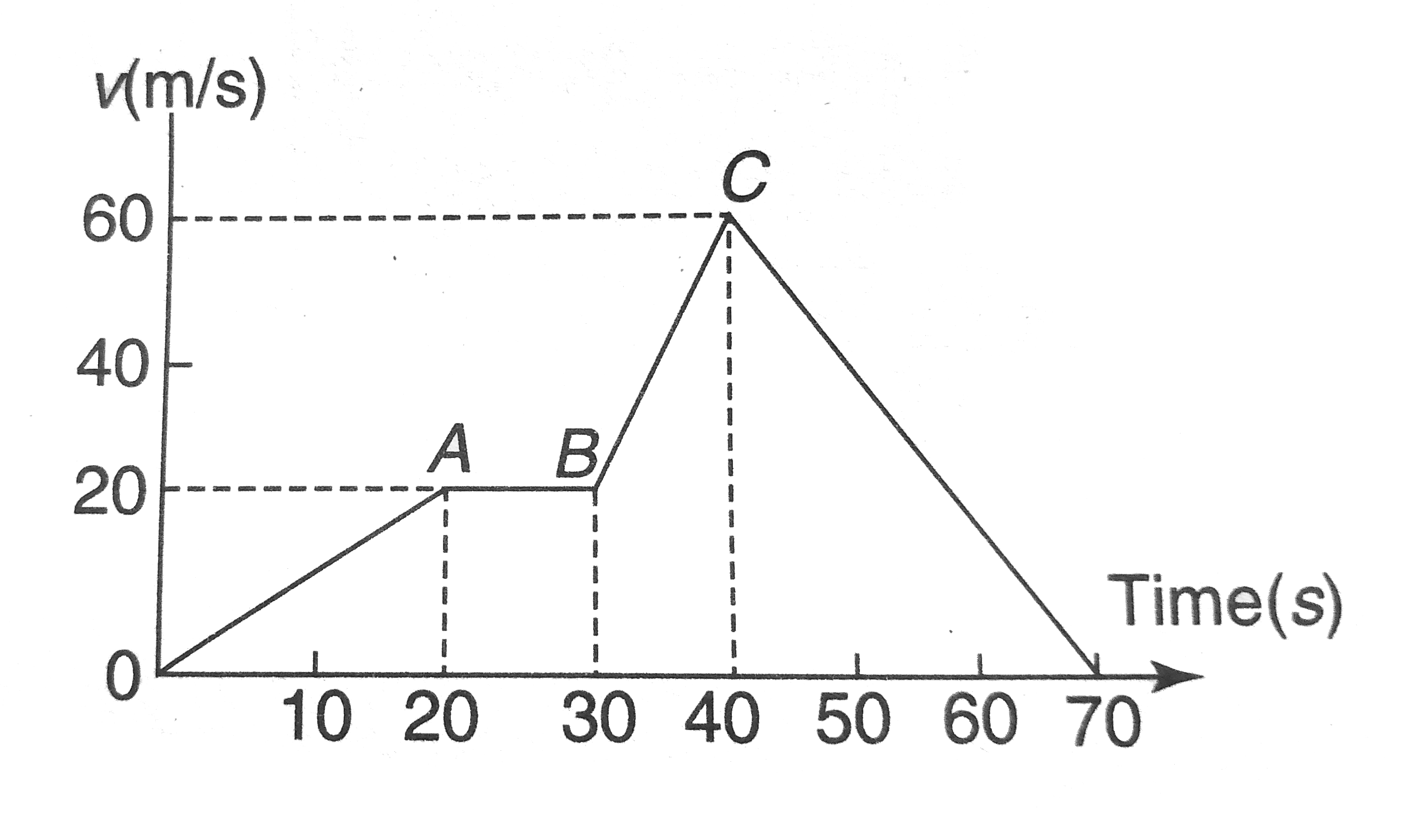A particle moves along x-axis with acceleration a=a0(1–t/T) where a0 and T are constants if velocity at t = 0 is zero then find the average velocity from t = 0 to the time when a = 0.
a0T3
a0T2
a0T4
a0T5
To solve the problem step by step, we will follow the given information and derive the average velocity of the particle from time t=0 to the time when acceleration a=0.
Step 1: Understand the acceleration function
The acceleration of the particle is given by:
a=a0(1−tT)
where a0 and T are constants.
Step 2: Find the time when acceleration is zero
To find the time when the acceleration is zero, we set the acceleration equation to zero:
a0(1−tT)=0
This implies:
1−tT=0⟹t=T
So, the acceleration becomes zero at t=T.
Step 3: Find the velocity as a function of time
The acceleration is the derivative of velocity with respect to time:
dvdt=a=a0(1−tT)
To find the velocity, we integrate the acceleration with respect to time:
v(t)=∫adt=∫a0(1−tT)dt
Performing the integration:
v(t)=a0(t−t22T)+C
Since the velocity at t=0 is given as zero, we can find the constant C:
v(0)=0⟹C=0
Thus, the velocity function simplifies to:
v(t)=a0(t−t22T)
Step 4: Calculate the average velocity
The average velocity vavg from t=0 to t=T is given by:
vavg=1T∫T0v(t)dt
Substituting the expression for v(t):
vavg=1T∫T0a0(t−t22T)dt
Now, we can compute the integral:
vavg=a0T(∫T0tdt−12T∫T0t2dt)
Calculating the integrals:
∫T0tdt=T22,∫T0t2dt=T33
Substituting these results back into the equation for average velocity:
vavg=a0T(T22−12T⋅T33)
Simplifying:
vavg=a0T(T22−T26)=a0T(3T26−T26)=a0T⋅2T26=a0T3
Final Result
The average velocity from t=0 to t=T is:
vavg=a0T3
The acceleration of the particle is given by:
a=a0(1−tT)
where a0 and T are constants.
To find the time when the acceleration is zero, we set the acceleration equation to zero:
a0(1−tT)=0
This implies:
1−tT=0⟹t=T
So, the acceleration becomes zero at t=T.
The acceleration is the derivative of velocity with respect to time:
dvdt=a=a0(1−tT)
To find the velocity, we integrate the acceleration with respect to time:
v(t)=∫adt=∫a0(1−tT)dt
Performing the integration:
v(t)=a0(t−t22T)+C
Since the velocity at t=0 is given as zero, we can find the constant C:
v(0)=0⟹C=0
Thus, the velocity function simplifies to:
v(t)=a0(t−t22T)
The average velocity vavg from t=0 to t=T is given by:
vavg=1T∫T0v(t)dt
Substituting the expression for v(t):
vavg=1T∫T0a0(t−t22T)dt
Now, we can compute the integral:
vavg=a0T(∫T0tdt−12T∫T0t2dt)
Calculating the integrals:
∫T0tdt=T22,∫T0t2dt=T33
Substituting these results back into the equation for average velocity:
vavg=a0T(T22−12T⋅T33)
Simplifying:
vavg=a0T(T22−T26)=a0T(3T26−T26)=a0T⋅2T26=a0T3
The average velocity from t=0 to t=T is:
vavg=a0T3
Topper's Solved these Questions
Similar Questions
A particle is moving along x-axis with acceleration a=a0(1−t/T) where a0 and T are constants. The particle at t=0 has zero velocity. Calculate the average velocity between t=0 and the instant when a=0
View SolutionAcceleration of a particle moving along x-axis at time t, given by f=f0(2−tT), where f0 and T are constants. Initial velocity is zero. In the time interval between t = 0, and the instant when f = 0, the particle's velocity was found to be NMf0T. The value of NM is ______
View Solution
Knowledge Check
- Question 1 - Select One
The velocity-time graph of a body is given below. Find the average velocity from t=0 to t=40s.
 A20m/sB40m/sC50m/sD60m/s
A20m/sB40m/sC50m/sD60m/s - Question 2 - Select One
A particle moving along x-axis has acceleration f, at time t, given by f=f0(1−tT), where f0 and T are constants. The particle at t= 0 has zero velocity. In the time interval between t= 0 and the instant when f= 0, the particle's velocity (vx) is
A12f0T2Bf0T2C12f0TDf0T - Question 3 - Select One
A particle moving along x-axis has acceleration f, at time t, given by f=f0(1−tT), where f0 and T are constant.
The particle at t=0 has zero velocity. In the time interval between t=0 and the instant when f=0, the particle's velocity (vx) is :Af0TB12f0T2Cf0T2D12f0T
A particle moving along x-axis has acceleration f, at time t, given by f=f0(1−tT), where f0 and T are constants. The particle at t=0 has zero velocity. In the time interval between t=0 and the instant when f=0, the particle's velocity (vx) is
View SolutionA particle moving along x-axis has acceleration f, at time t, given by f=f0(1−tT), where f0 and T are constants. The particle at t=0 has zero velocity. In the time interval between t=0 and the instant when f=0, the particle's velocity (vx) is
View SolutionA particle moving along x axis has acceleration f at time t given by f=f0(1−1t) where f0 and T are constant the particle at T=0 has zero velocity in the time interval between t=0 and the instant when f=0 the particle velocity vx is
View SolutionA particle moving along x axis has acceleration f at time t given by f=f0(1−1t) where f0 and T are constant the particle at T=0 has zero velocity in the time interval between t=0 and the instant when f=0 the particle velocity vx is
View SolutionA particle moving along x-axis has acceleration f, at time t, given by f=f0(1−tT), where f0 and T are constant.
The particle at t=0 has zero velocity. In the time interval between t=0 and the instant when f=0, the particle's velocity (vx) is :View Solution

